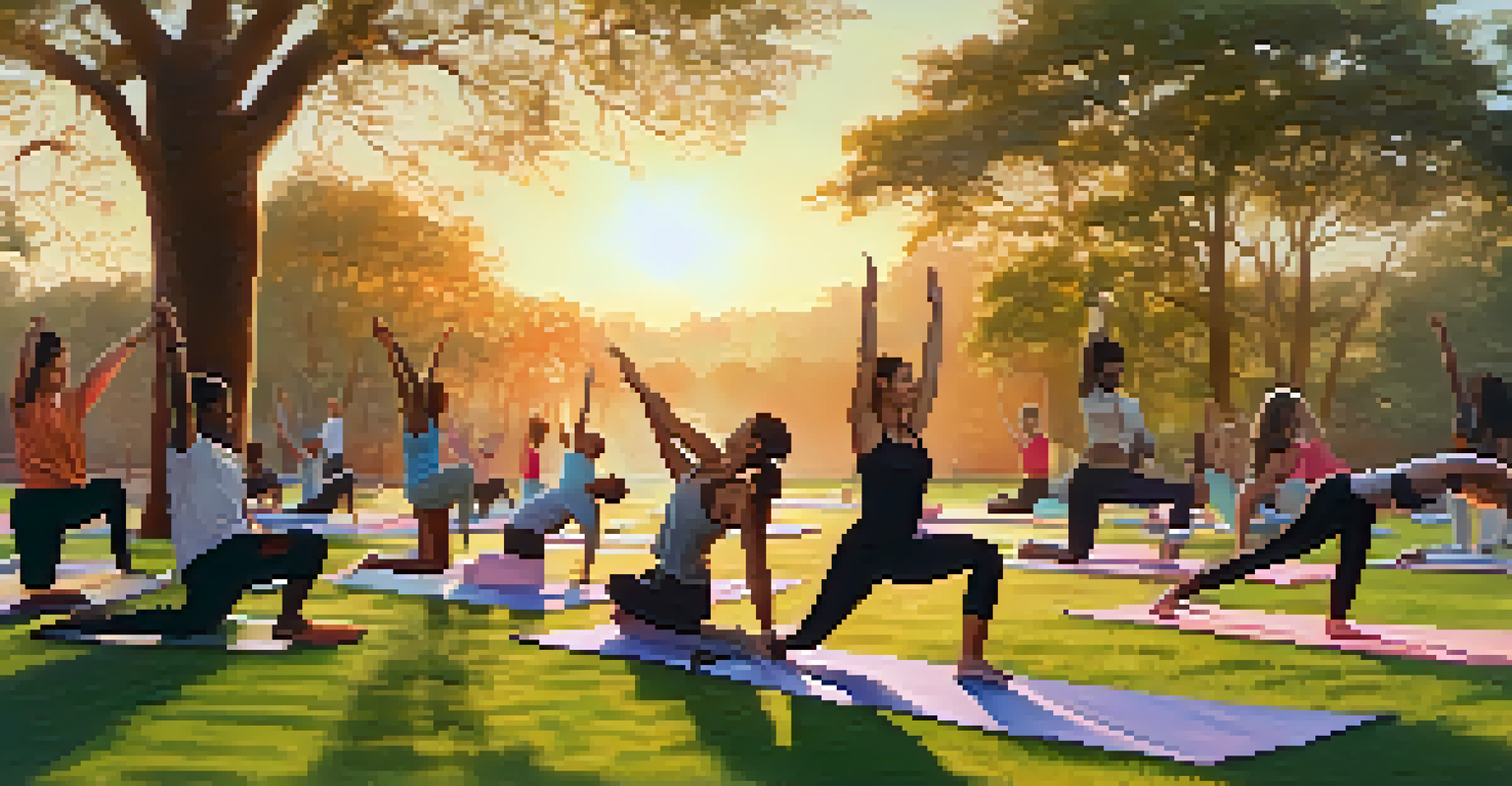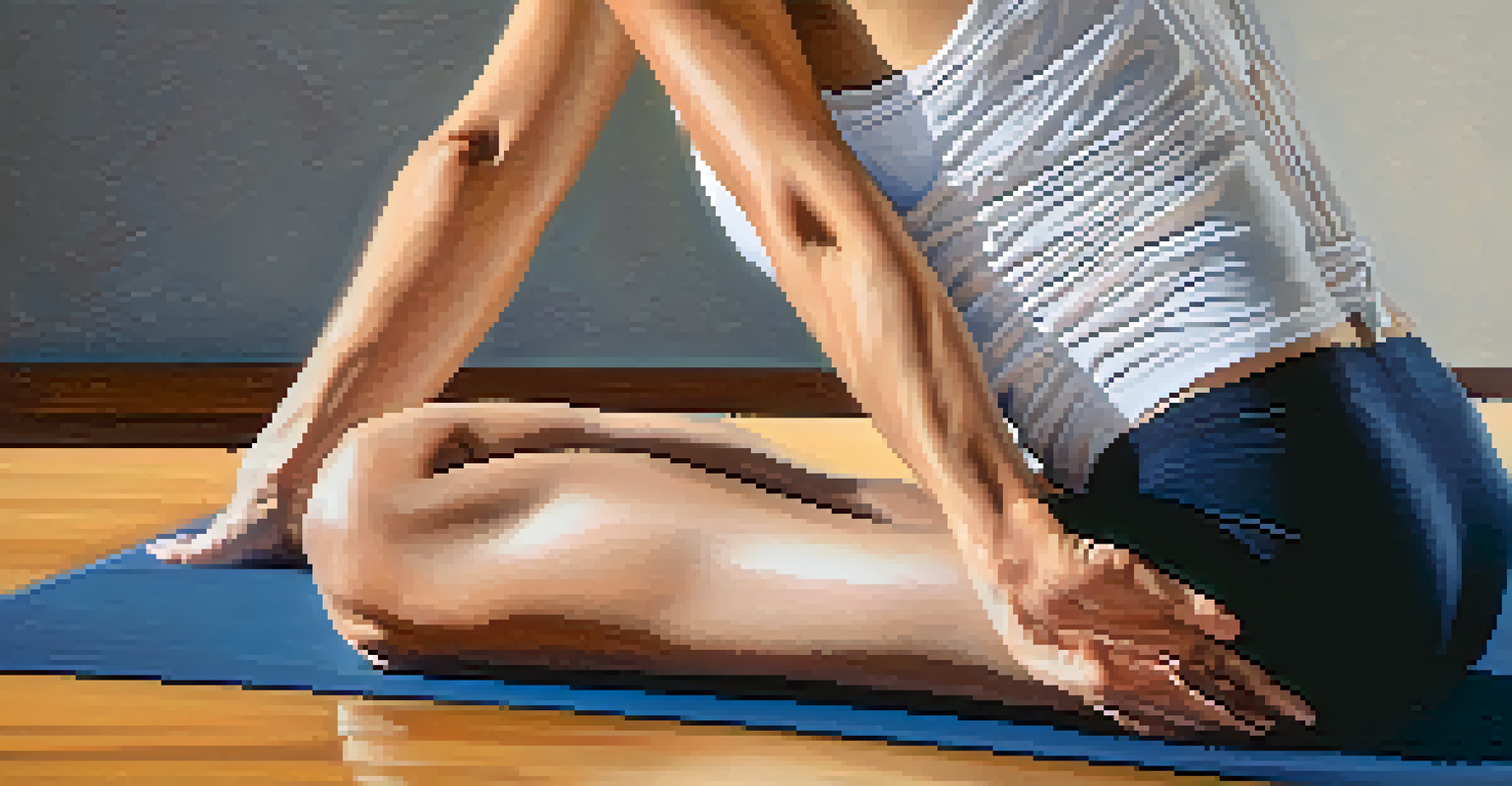Setting Goals to Improve Your Flexibility and Mobility

Understanding Flexibility and Mobility: What’s the Difference?
Flexibility and mobility are terms often used interchangeably, but they refer to different concepts. Flexibility is about the range of motion in your muscles and joints, while mobility encompasses the ability to move freely and easily, often involving coordination and stability. Think of flexibility as the foundation, and mobility as the structure built upon it.
The more you stretch, the more flexible you become.
Improving your flexibility can help decrease stiffness and increase your range of motion, making everyday activities easier. On the other hand, enhancing your mobility can improve your performance in sports and reduce the risk of injury. Understanding these differences is crucial when setting goals for your fitness journey.
As you aim to improve both flexibility and mobility, you’ll find that they complement each other beautifully. Setting specific goals in each area allows you to track progress and stay motivated. By recognizing their unique roles, you’ll be better equipped to create a balanced approach to your training.
Why Setting Goals is Essential for Flexibility Improvement
Setting goals is a powerful way to stay focused and motivated on your flexibility journey. Without clear objectives, it’s easy to lose direction and become discouraged. Think of goals as your roadmap, guiding you toward your desired outcomes in flexibility and mobility.

When you set specific, measurable, achievable, relevant, and time-bound (SMART) goals, you create a solid framework for your progress. For example, instead of saying, 'I want to be more flexible,' try 'I want to touch my toes within three months.' This clarity gives you something concrete to work toward.
Flexibility vs. Mobility Explained
Flexibility is the range of motion in muscles and joints, while mobility includes the ability to move freely with coordination and stability.
Moreover, celebrating small milestones along the way can boost your motivation. As you achieve each goal, you’ll gain confidence and a sense of accomplishment, propelling you to tackle the next challenge. Remember, each step forward is a victory in your flexibility journey.
Identifying Your Current Flexibility Levels
Before setting goals, it’s important to assess your current flexibility levels. This can be done through simple tests like the sit-and-reach or shoulder flexibility test. Understanding where you stand helps you identify areas for improvement and sets a baseline for measuring progress.
Flexibility is the key to stability.
Keeping a journal or using an app to track your flexibility exercises can also provide insights into your starting point. Documenting your capabilities not only highlights your strengths but also reveals specific areas that need more attention. This self-awareness is essential for setting realistic goals.
Don't be discouraged by your current flexibility levels; everyone starts somewhere. Use this initial assessment as motivation to improve. Remember, flexibility is a journey, and recognizing your starting point is the first step toward achieving your goals.
Setting Specific Flexibility Goals for Better Results
When it comes to setting flexibility goals, specificity is key. Instead of vague objectives, opt for clear and concise targets. For instance, instead of saying, 'I want to stretch more,' you could set a goal like, 'I will practice stretching for 15 minutes every morning.'
Consider incorporating different types of stretches into your routine. Static stretches, dynamic stretches, and even yoga can all contribute to enhanced flexibility. By focusing on specific muscle groups or movements, you can tailor your goals to address your unique needs and interests.
Set SMART Goals for Progress
Creating specific, measurable, achievable, relevant, and time-bound goals helps maintain focus and motivation on your flexibility journey.
Additionally, consider setting both short-term and long-term goals. Short-term goals can provide quick wins to keep you motivated, while long-term goals offer a larger vision to aspire to. Balancing both will create a sustainable approach to improving your flexibility.
Incorporating Mobility Work into Your Routine
While flexibility is crucial, incorporating mobility work is equally important for overall movement quality. Mobility exercises focus on joint movement and stability, which can greatly enhance your performance in flexibility-focused activities. Think of mobility work as the oil that keeps the machinery running smoothly.
To add mobility work to your routine, consider dynamic warm-ups or specific mobility drills. Exercises like hip circles, ankle rolls, and shoulder dislocates can improve your range of motion and prepare your body for deeper stretches. By integrating these into your warm-up, you’ll set the stage for better flexibility outcomes.
Creating a balanced routine that includes both flexibility and mobility work will lead to noticeable improvements in your overall movement. Remember, flexibility and mobility go hand in hand, and prioritizing both will help you achieve your fitness goals more effectively.
Tracking Progress and Adjusting Your Goals
Tracking your progress is vital for staying motivated and making necessary adjustments to your goals. Regularly revisit your initial assessments and compare them to your current flexibility levels. This not only helps you see how far you've come but also allows you to celebrate your achievements.
You might find that certain goals need to be adjusted based on your progress. If you’re consistently meeting your targets, it could be time to challenge yourself further. On the flip side, if you’re struggling, consider modifying your goals to be more realistic and attainable.
Balance Flexibility and Mobility Work
Incorporating both flexibility and mobility exercises into your routine enhances overall movement quality and performance in physical activities.
Remember, flexibility improvement is not a linear journey; there will be ups and downs. Be patient with yourself, and don’t hesitate to reassess your goals. Flexibility is a lifelong pursuit, and adapting your approach is part of the process.
Staying Motivated on Your Flexibility Journey
Staying motivated can be one of the biggest challenges in any fitness journey, including improving flexibility. One effective strategy is to find a workout buddy or join a group class. Having someone to share your goals with can make the process more enjoyable and hold you accountable.
Incorporating variety into your routine can also help keep things fresh. Try different types of stretching techniques, yoga styles, or even dance classes to spice up your approach. This not only keeps boredom at bay but also exposes you to new methods that could enhance your flexibility.

Lastly, remind yourself why you started this journey in the first place. Whether it's to prevent injury, enhance athletic performance, or simply feel better in your body, keeping your 'why' at the forefront will help maintain your motivation. Celebrate your progress and enjoy the journey toward greater flexibility and mobility.